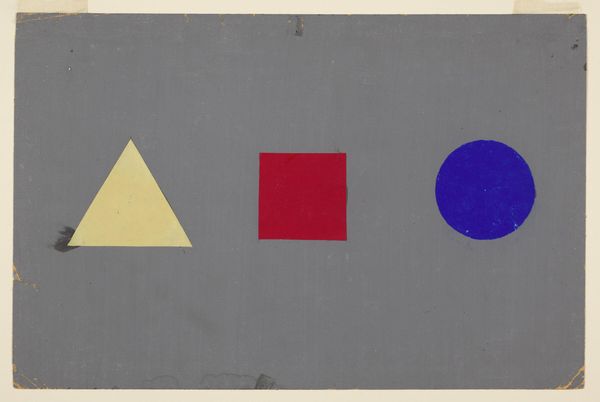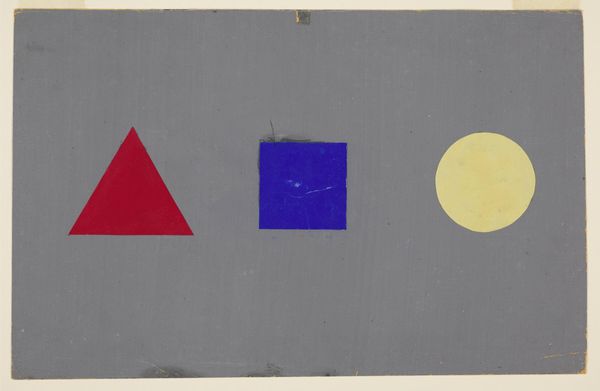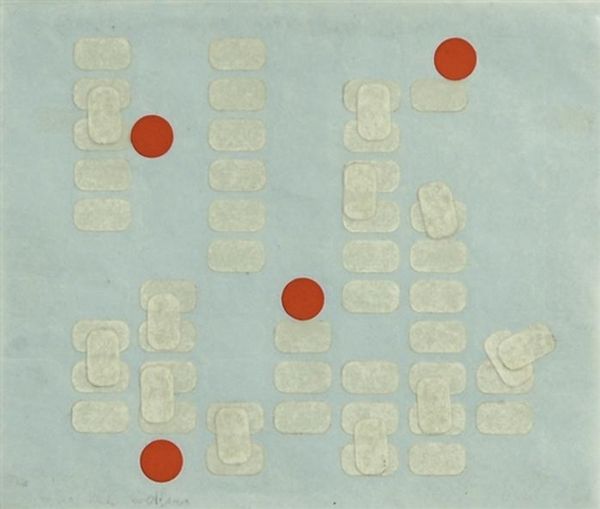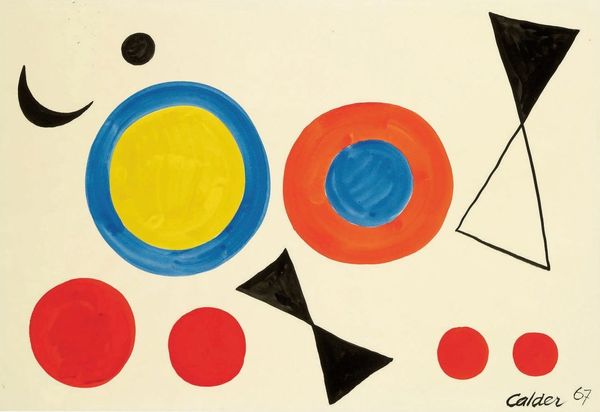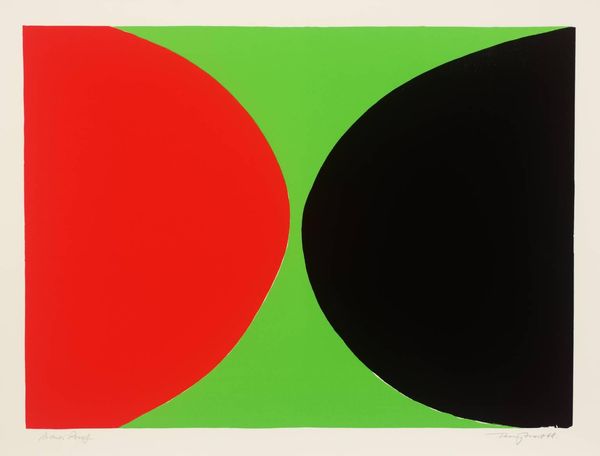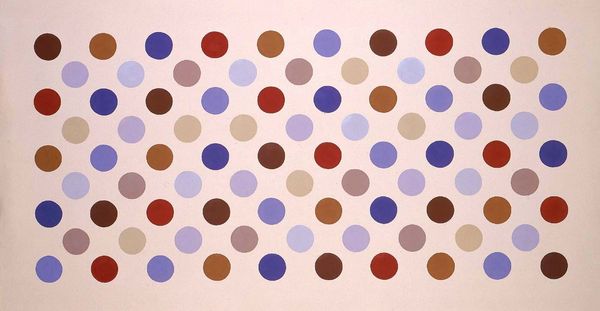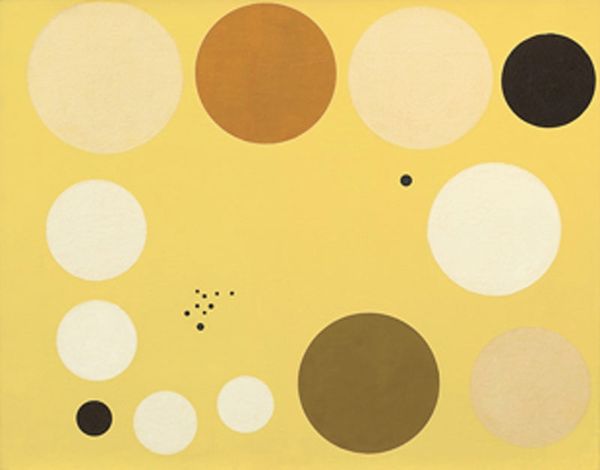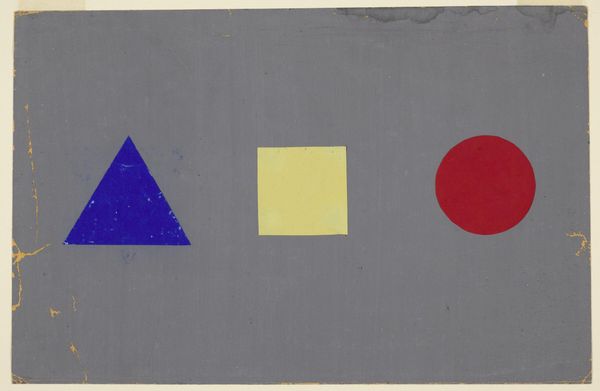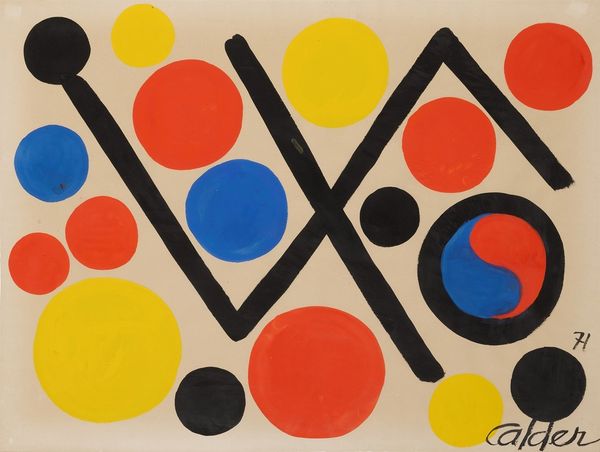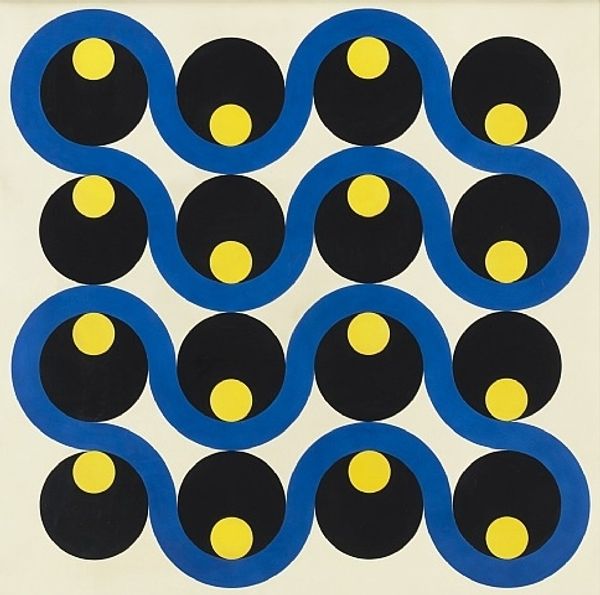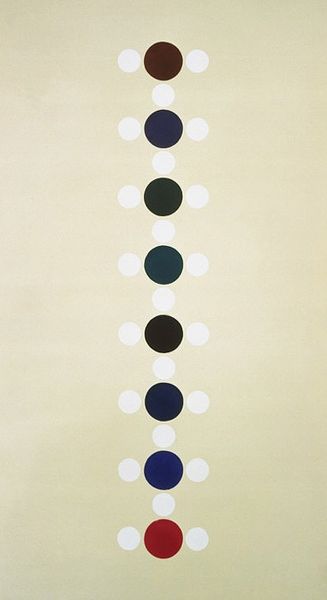
acrylic-paint
#
circle
#
acrylic-paint
#
geometric
#
abstraction
#
pop-art
#
hard-edge-painting
Copyright: John Armleder,Fair Use
Curator: I’d like to introduce you to John Armleder's "Untitled 1978." Editor: It’s striking, immediately giving the sense of playfulness. The composition is so simple—three colored circles on what looks like a roughly textured paper background. Curator: Exactly! It pushes boundaries between pop art, geometric abstraction, and hard-edge painting. This piece embodies Armleder’s engagement with postmodern theory by inviting questions around authenticity. The colors are pure and flat, yet on a medium that isn't a smooth gallery canvas. It evokes a sense of DIY, wouldn't you say? Editor: Definitely, there’s an element of deliberate crudeness, almost a deconstruction of high art’s seriousness, the visible fibers of the canvas hint to labor, process. What message does it carry about production versus aesthetic outcome? Curator: The deliberate 'non-finesse' aesthetic subverts artistic expectation. It prompts a viewer to contemplate the socio-political meaning, particularly its challenge to rigid standards in art—it critiques established structures through its intentional naiveté. Editor: I think you are spot on there. And with these bold colors, Armleder forces us to reassess what we qualify as art; It could suggest the relationship between pop art’s emphasis on mass culture with more personal forms of artistic creation. Curator: And that leads to asking about accessibility of the artistic process and how notions of exclusivity were actively being challenged through art, through performance art at that time. Editor: By bringing it down to the very basic building blocks of visual construction, circle and color. How each part becomes as or more important than the final result. Curator: "Untitled 1978" is about more than aesthetics—it represents larger conceptual issues related to cultural valuation, class hierarchies reflected by access or a lack thereof. Editor: Agreed. These are questions the artist is pushing us to consider, the materiality suggesting art’s connection to more democratic modes of design, I leave now thinking about access to creating! Curator: Precisely! It's an important reminder to stay critical about who dictates the terms "good" and "bad" and where art begins.
Comments
No comments
Be the first to comment and join the conversation on the ultimate creative platform.


